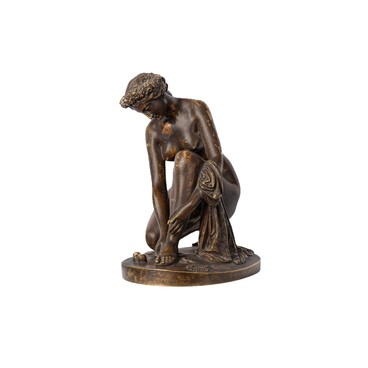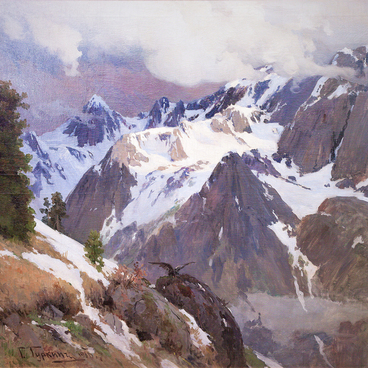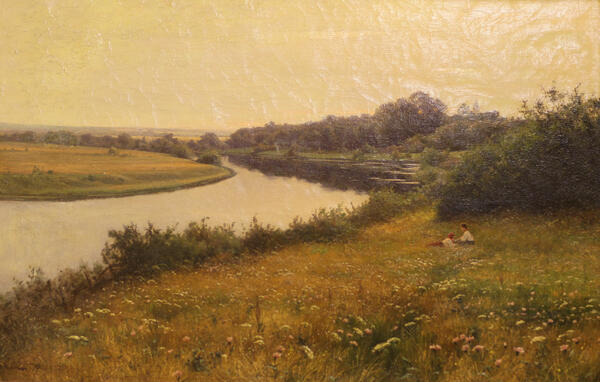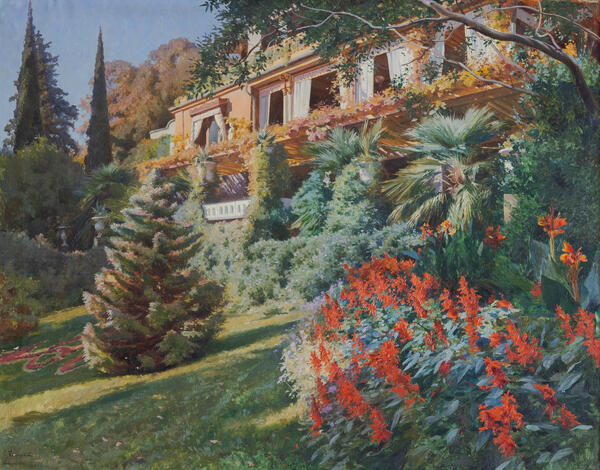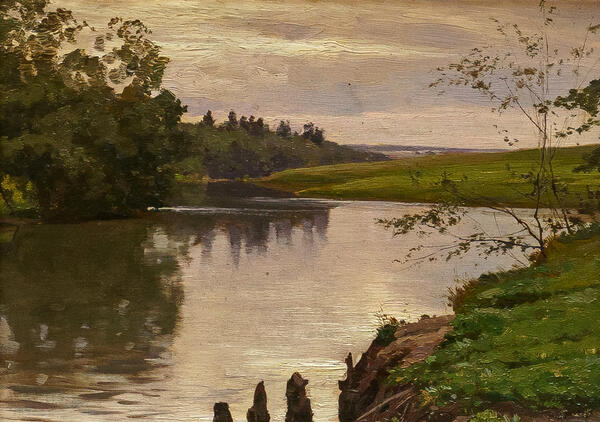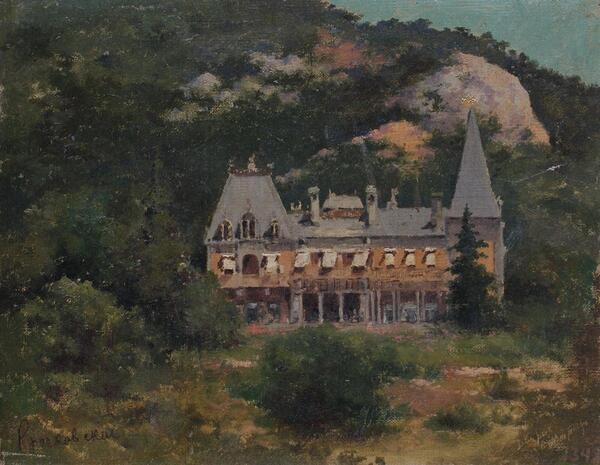Iosif Krachkovsky is a Russian landscape painter of Polish origin. However, he had a long journey to becoming an artist. After finishing a St. Petersburg gymnasium, Krachkovsky studied at a conservatory for several years. But his passion for painting took over, and he entered the Academy of Arts. In 1878, he was awarded a small gold medal for his painting ‘Morning’, and a year later — a big gold medal for the ‘Evening’. This highest award allowed him to travel across Europe for several years at the expense of the Academy and hone his skills as a landscape painter. Krachkovsky received the title of academician for the works that he painted in the South of France, and the Academy of Arts acquired his landscapes as exemplary.
Iosif Krachkovsky worked a lot and very hard. After retiring in Paris, he began to paint daily and created several thousand canvases throughout his life. He preferred to paint in the technique of ‘alla prima’ (literally — ‘at the first attempt’; paint is applied wet on wet without letting earlier layers dry), because he believed that gradual application of layers makes the canvas less bright and durable.
The painter’s artistic style is characterized by his great attention to detail, love for bright tones and chiaroscuro. The magazine “Niva” in 1902 noted that his works “are distinguished by a special tenderness of tones, the softness of an airy haze that envelops the distance, and the power of a natural mood”. Literary and art critic Vladimir Chuiko wrote in 1887:
Iosif Krachkovsky worked a lot and very hard. After retiring in Paris, he began to paint daily and created several thousand canvases throughout his life. He preferred to paint in the technique of ‘alla prima’ (literally — ‘at the first attempt’; paint is applied wet on wet without letting earlier layers dry), because he believed that gradual application of layers makes the canvas less bright and durable.
The painter’s artistic style is characterized by his great attention to detail, love for bright tones and chiaroscuro. The magazine “Niva” in 1902 noted that his works “are distinguished by a special tenderness of tones, the softness of an airy haze that envelops the distance, and the power of a natural mood”. Literary and art critic Vladimir Chuiko wrote in 1887:


